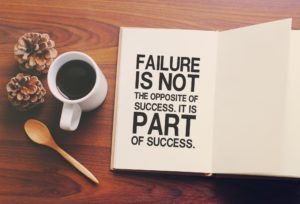
The city won a second All America City Award in 2001. So much has changed since, with many of the values that made Delray special abandoned.
Five years ago, award winning journalist James Fallows wrote a groundbreaking article in The Atlantic entitled “Eleven Signs a City Will Succeed.”
The article was a summation of James and Deb Fallows’s 54,000-mile journey around America in a single engine plane. The trip became a best-selling book “Our Towns” and a compelling series on HBO. I highly recommend both.
Considering the tumult in Delray Beach, I thought it would be interesting to revisit the article to see how many signs of success we can check off.
Sadly, even if we grade with a curve, we are not scoring too high these days. But sometimes a poor grade will force you to buck up and do better. We’re still a great town. We just have lousy politics and that can be corrected by electing better leaders. Take the test yourself and let me know what you find.
Here’s a list of Fallows’ 11 traits of successful towns:
- Divisive national politics seem a distant concern.
Grade: The City Commission in Delray Beach is a non-partisan body. Partisan politics has no place in city government. But the last two election cycles were highly partisan affairs, and I would argue that the results turned on party affiliation and not on ideas about how to make Delray a better place. This is not a healthy development. For the record, my party happens to have a majority of voters in Delray, and I still don’t like partisanship on the city level or anywhere frankly. The divisiveness is endangering our Republic and it has hurt Delray too.
- You can pick out the local patriots. A standard question the Fallows would ask when they landed in a town was “Who makes this town go?” The answers varied widely. Sometimes it was a mayor or a city-council member. Sometimes it was a local business leader or influential real-estate developer. Sometimes a university president or a civic activist, an artist, a historian, or a radio personality. So, who makes our town go?
Grade: As noted in a recent blog, I would suggest that the volunteer and donor class in Delray have been told to pack their bags. Example: Old School Square eviction. When you lose the patriots, the people who roll up their sleeves and get it done, you risk shredding the civic fabric.
- “Public-private partnerships” are real.
In successful towns, people can point to something specific and say, “this is what a partnership means.”
Grade: In our town, that project was Old School Square. But after 32 years, OSS was treated as a tenant not a partner and shown the door. Other opportunities to partner are being ignored or bitterly rejected. Example: The Set Transformation Plan has languished because the city refuses to engage the residents in the northwest and southwest neighborhoods. This is in stark contrast to the Southwest Plan, which was done with city commissioners and the CRA at the table with the community.
What resulted was a citizen driven plan that the city and CRA helped to fund with millions of dollars in improvements ranging from a gateway feature and a new streetscape on Northwest/Southwest 5th Avenue to the new Catherine Strong Park and an expansion of the Village Academy.
Today, we don’t see these types of efforts. As noted earlier, the Set Transformation Plan and Congress Avenue plan sit on a shelf gathering dust despite the best efforts of citizens.
- People know the civic story. America has a “story,” which everyone understands even if some challenge it. A few states have their guiding stories—California is either the ever-promising or the sadly spoiled frontier, Vermont is known as its own separate Eden.
Successful cities have their stories too. New York is the Big Apple, always resilient and always at the center of the national conversation, Chicago is the Windy City, the capital of the Midwest and a place where bold visions come true.
Grade: Who is sharing and teaching our civic story? The local press corps has been deeply affected by changes to the industry and new methods of delivering and consuming the news and many of our past civic heroes have been sidelined by personalities who don’t want to hear from the old timers. That’s a big mistake. There’s a place for elders in every community and if they are silenced or ignored or in some cases disparaged it’s not healthy. That’s what happening in Delray.
- They have a downtown.
Grade: We have a downtown and it’s robust. However, I would argue that we need to diversify beyond food and beverage and add offices, creative spaces and other uses that will sustain us as a regional activities center. Who is having this conversation?
- They are near a research university.
Grade: Our proximity to FAU is a plus, so is our closeness to Lynn University and Palm Beach State College. But the question is are we taking advantage of that proximity and are there programs and initiatives that involve the local universities?
- They have, and care about, a community college. See above.
- They have unusual schools.
Grade: Village Academy and Spady are “unusual” in that the former is a deregulated public school that has the authority to innovate, and the latter offers a Montessori program. Atlantic’s International Baccalaureate Program has always been impressive and important to Delray Beach.
- They make themselves open. Trying to attract and include new people.
Grade: Here’s where I see our biggest deficit. There was a time when the entirety of city government was designed around the notion of civic engagement, involvement and education. We had charrettes, visioning conferences, neighborhood dinners, town hall meetings, citizen goal setting sessions, citizen academies, police academies, a robust volunteer effort (1,200 police volunteers at the height of the program) and a Youth Council. We sent neighborhood leaders to school so they could become better leaders, we held training sessions for neighborhood associations, supported a race relations initiative and held regular mayoral roundtables. It worked. And then a lot of it, maybe even most of it, was abandoned (and well before Covid). This has been a crippling development. When your involvement is limited to social media, you don’t get good outcomes.
- They have big plans.
Grade: I will argue that no city of any size had bigger aspirations than Delray did. We dared to dream, and we executed as well. Yes, we have a state mandated Comprehensive Plan, but I would argue that it’s not a vision and the process— which included citizens— was not citizen driven. There’s a difference. A big difference. The magic happens when the community is involved.
Another lesson I learned along the way is that the journey needs to be as fun or more so than achieving the destination. Today, there’s little fun and a lot of division.
- They have craft breweries
Grade: One final marker, perhaps the most reliable, according to Fallows: A city on the way back will have one or more craft breweries, and probably some small distilleries too, according to Fallows.
“A town that has craft breweries also has a certain kind of entrepreneur, and a critical mass of mainly young (except for me) customers,” Fallows wrote. “You may think I’m joking, but just try to find an exception.”
This one I struggle with. I love craft breweries and I can see where they are important and send a message but I’m not sure they are an essential trait of a thriving city. Anyway, I love Saltwater Brewery and wish we had more.
Conclusion…we have some serious storm clouds to deal with.
And if you think we’re invulnerable because Atlantic Avenue is busy, well there’s no such thing.





